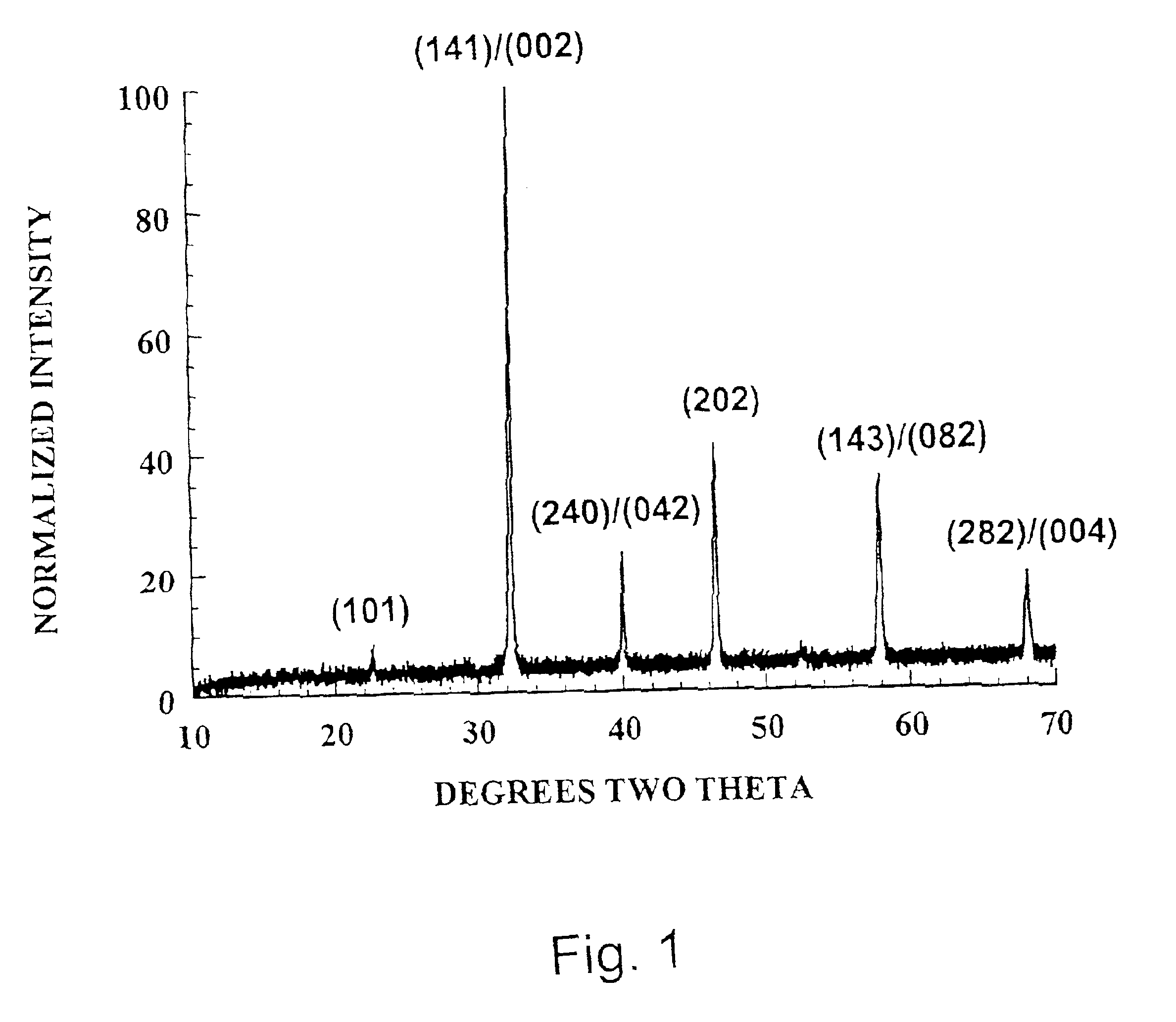Solid state oxygen anion and electron mediating membrane and catalytic membrane reactors containing them
a technology of oxygen anion and electron mediating membrane, which is applied in the direction of metal/metal-oxide/metal-hydroxide catalyst, chemical/physical/physical-chemical stationary reactor, etc., can solve the problems of oxygen anion conductivity in a material, presence of oxygen anion defects, and add to the cost and complexity of processing, so as to facilitate the reduction of nox to n2, the efficiency of the membrane for oxidation-reduction catalysis can be significantly increased
- Summary
- Abstract
- Description
- Claims
- Application Information
AI Technical Summary
Benefits of technology
Problems solved by technology
Method used
Image
Examples
example 1
Membrane Fabrication
[0104]All compounds were prepared from mixtures of the appropriate metal oxide(s) and metal carbonate(s) in the desired stoichiometries. Powders were placed in a small polyethylene container with an equal amount, by volume, of isopropyl alcohol. Several cylindrical yttria-stabilized zirconia (YSZ) grinding media were also added to the container. The resulting slurry was mixed thoroughly on a ball mill for several hours. The alcohol was then allowed to evaporate yielding a homogeneous mixture of the starting materials.
[0105]This homogeneous mixture was calcined to obtain the desired phase. Powders were placed in alumina crucibles and fired at temperatures up to about 1450° C. for 12 h in atmosphere. Upon cooling, the powders were ground to −100 mesh with a mortar and pestle. The ground powder was then analyzed by X-ray diffraction (XRD)to verify that the proper phase had been formed. Calcining was repeated if necessary until the desired single-phase material was o...
example 2
Determination of Oxygen Permeation Rates
[0115]A sintered Sr1.2La0.8GaFeO5.4 membrane was incorporated into a two-zone catalytic membrane reactor with a Pyrex (Trademark, Corning) seal used to isolate the two zones. A generic reactor is illustrated in FIG. 10 and discussed above. No catalysts were coated on the membrane. The reducing section of the reactor was exposed to air and the oxidizing section of the reactor was exposed to the inert gas, He. Air was used rather than oxygen because the nitrogen in air could be used to assess any leaks in the membrane seal in the reactor apparatus used. The reactor was heated to 850° C. (as measured by a thermocouple at the furnace close to the reactor), and the amount of oxygen permeating through the membrane and any nitrogen leaks into the He was measured.
[0116]Determinations of oxygen and nitrogen concentrations in He were made by gas chromatography (Gow-Mac series 580 GC equipped with a ten foot Carbosphere column (Alltech)) maintained at am...
example 3
Ionic and Electronic Conductivities of Membrane Materials
[0119]Ionic conductivities were calculated from experimentally determined oxygen permeation rates (measured as described in Example 2 with LSC coated membranes) using the following equation (Y. Teraoka, H.-M. Zhang, S. Furukawa and N. Yamazoe (1985) Chem. Lett., 1743): J=1.72×10-4T·σidlog PO2′PO2″
where J is the oxygen permeation rate in cm3(STP) / min-cm2 of disk surface, T is the absolute temperature, d is the sintered disk thickness (cm) and P′(O2) and P″(O2) are the oxygen partial pressures on the air and He sides, respectively, on either side of the membranes. For the values listed in Table 2 above P′(O2) and P″(O2) were taken as 0.21 and 1×10−3 atm, respectively and permeation measurements were performed in the temperature range 750° C.-900° C.
[0120]Total conductivity, i.e. the sum of electronic and ionic conductivity, of membranes was measured using the van der Pauw four-probe method. See L. J. van der Pauw (1958) Phil...
PUM
| Property | Measurement | Unit |
|---|---|---|
| Fraction | aaaaa | aaaaa |
| Fraction | aaaaa | aaaaa |
| Fraction | aaaaa | aaaaa |
Abstract
Description
Claims
Application Information
 Login to View More
Login to View More - R&D
- Intellectual Property
- Life Sciences
- Materials
- Tech Scout
- Unparalleled Data Quality
- Higher Quality Content
- 60% Fewer Hallucinations
Browse by: Latest US Patents, China's latest patents, Technical Efficacy Thesaurus, Application Domain, Technology Topic, Popular Technical Reports.
© 2025 PatSnap. All rights reserved.Legal|Privacy policy|Modern Slavery Act Transparency Statement|Sitemap|About US| Contact US: help@patsnap.com



